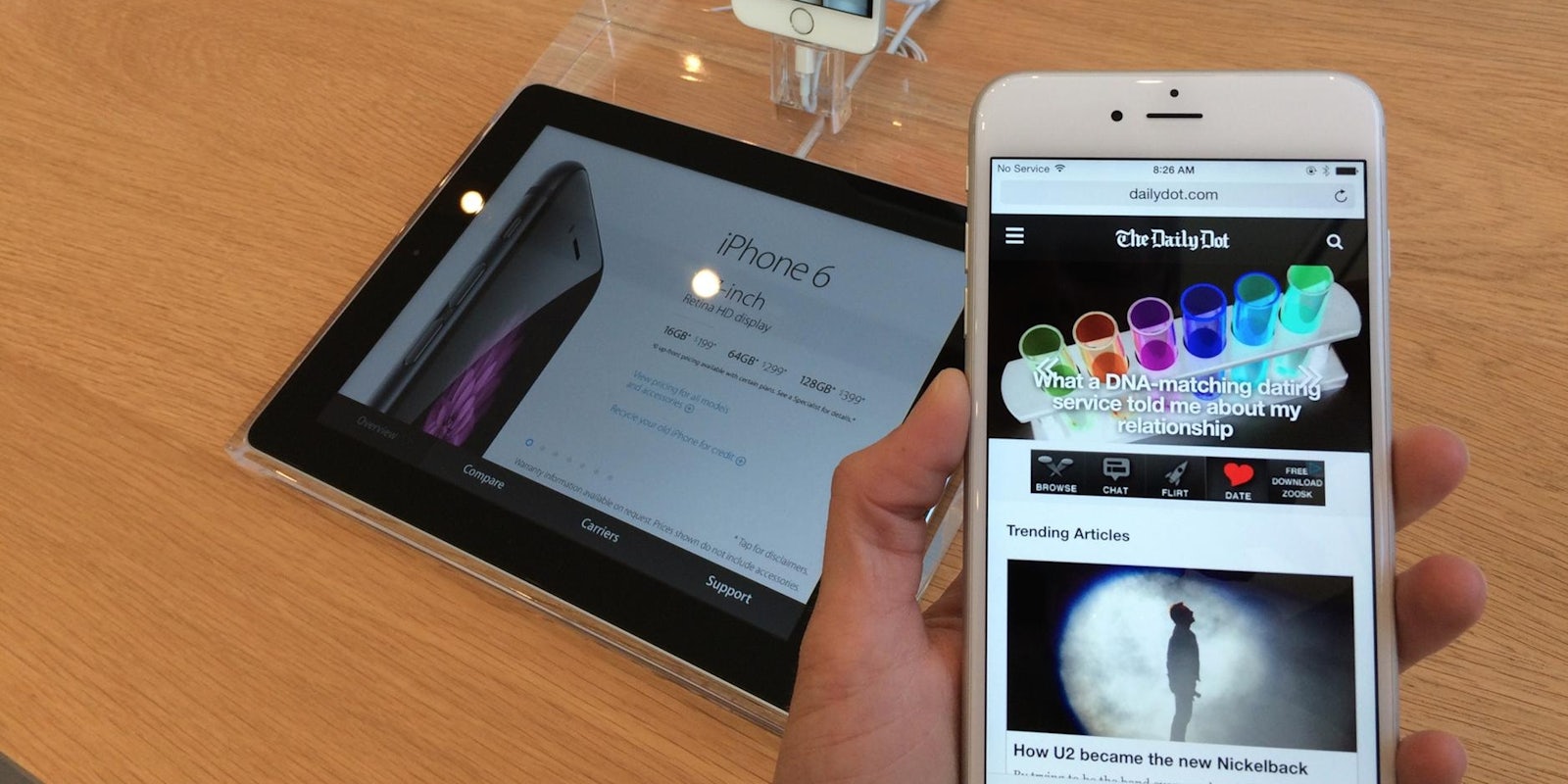The testing has only just begun, but here are some of my first impressions of the new iPhone 6. The model is the closest direct successor to last year’s iPhone 5S, featuring a total hardware redesign. Here are the first things that felt noticeably different about this year’s 4.7-inch iPhone model.
1) A bigger display really is better
After switching to the iPhone 5S from a Nexus 7 last year, I’ve missed the large display. I sacrificed a bigger, better screen in favor of a phone more comfortable to hold, but have missed it ever since. Like that Android device, the iPhone 6 display is 4.7-inches, maintaining the same 326 pixels-per-inch that we’ve come to expect from an Apple display (notably, the iPhone 6 Plus boosts that up to 401 PPI). The iPhone 6 is a massive improvement over the iPhone 5S when it comes to doing basic stuff like browsing, checking social apps, and even hanging out on the homescreen. After using the iPhone 6, the iPhone 5S feels incredibly cramped—but if you’ve been on Android you might have known that already.
2) It’s comfortable to hold
My hands aren’t particularly small, but I still expected that holding the iPhone 6 would be a struggle. Remarkably, it isn’t. One-handed use comes naturally, even walking down the street or otherwise on the go. The iPhone 6 is considerably thinner than the iPhone 5S, and not dealing with that extra depth makes it that much easier to hold.
3) Pocketability
Not only does it still fit in my back pocket (I always carry it there), but it actually fits better than the iPhone 5S that I’m upgrading from. Again, it’s an issue of depth: 6.9mm compared to 7.6mm with the previous model. That doesn’t sound like a lot, but the new iPhone’s glass display sort of bends over the sides, and the end result doesn’t have the same industrial design appeal, but it feels friendlier.
4) Bright light isn’t a problem
Anecdotally, the iPhone 6 does seem to improve bright light visibility considerably. The iPhone 6 and iPhone 6 Plus models have a subtly improved display thanks to an “improved polarizer” layer just under the glass and it does seem to make a difference for those times when you’re squinting into your phone in bright sunlight or through sunglasses.
5) Double tapping tricks
If you double tap the iPhone 6’s home button, it triggers a mode that Apple calls “reachability,” essentially scrunching whatever is on the display down toward the bottom so you can get to it with one hand. It’s a neat if sort of awkward looking trick, but I’m more interested in the fact that the home button can now sense that double tap input. Personally, I’d prefer a phone that didn’t require any interruptive gestures whatsoever, and clicking the home button still feels a bit old fashioned. I’m hoping that in the future we might have the option to use a double tap, touch-only gesture to turn the phone on or access the homescreen.
6) Better camera
Part of it is that on-phone photos just look better on a bigger display, but so far, the iPhone 6’s camera does seem notably improved. It’s probably not a difference worth an upgrade—the iPhone 5S has an excellent camera too—but it does seem to perform better in backlit and mixed light environments, two scenarios notoriously difficult for any camera. So far, photos do seem to be brighter and more colorful, likely a result of smarter internal image processing geared toward a “punchier” photo—people like those, after all. The iPhone 6 boasts something called “focus pixels” which so far does appear to improve the iPhone’s autofocus (and automatic light metering), but if you’re sold on the optical image stabilization feature, you’ll have to take a look at the larger iPhone 6 Plus.
Photos by Taylor Hatmaker


